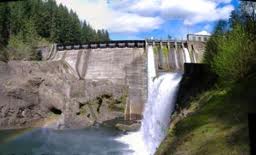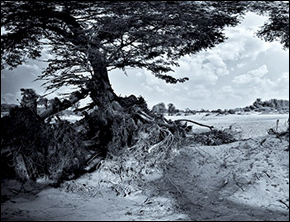Peter Gleick: Improving Water Infrastructure with Dam Building, but for Whose Benefit?
Part of the debate about water in the Western U.S., and California in particular, always revolves around whether, where, and how to build new dams. After all, that’s how we tried to solve our past water problems — just build another dam.
I’ve argued long and hard about this in my research and writing, and in previous blog posts (see “Temperance Flat falls flat“) — both in general and with some specific thoughts and concerns about the proposal to build a dam at Temperance Flat on the San Joaquin River. In short, I think it is a terrible idea: environmentally, politically, and economically unsound. That proposal is completely unsupportable by any objective analysis.
Water Number: 19 percent. As Bettina Boxall of the LA Times noted in her story this week, our experience with paying for past infrastructure should be a huge warning today. Irrigators who benefit from the federally built Central Valley Project have enjoyed the equivalent of a massive 60-year, interest-free loan. Not only have they failed to repay their share of the costs (having only repaid about 19 percent of their $1.2-billion share of the capital costs), but the federal government charges them no interest. Pretty sweet. Give me $1.2 billion in a very long-term, zero-interest loan and I can find you hundreds of thousands of acre-feet of water. Buy everyone efficient fixtures (washing machines, toilets, showerheads, urinals, drip or sprinkler systems, etc.) and get repaid over time through water bills savings.
Now, a small number of irrigators want California bonds and other public money to pay for the $3.3 billion Temperance Flat dam, but they want at least three-quarters of the water. [And there is no way it’s actually going to be only $3.3 billion.] They know, and openly acknowledge (again, see Boxall’s story), that they cannot afford to pay the true cost of water this dam is going to produce. That, by itself, is the best reason not to build this dam.
But here is a stunning idea: if the public is going to pay for the dam, why shouldn’t the public get all the water. Really. Every drop. And by “public,” I mean the environment. If bond money is going to be spent to build a huge dam, why not require that every drop be reserved for ecosystem restoration, fisheries protection, water-quality improvement, and the like — true “public goods?” None of the water should be allowed to be consumed for agriculture or urban supply unless users pay the full cost. None.
Of course, it STILL wouldn’t make sense to build Temperance Flat. We (the “public”) could find far more water at a far lower cost through financing of water-efficiency improvements in agriculture and urban settings.
In the end, the debate comes down to the best way to spend our limited public money to improve our water system. And spending $3.3 billion to help a very small number of farmers use water they cannot afford is not the best way. It won’t solve agriculture’s more fundamental challenges. It won’t restore our Delta ecosystems. It won’t satisfy new urban demands. In the end, the massive new infrastructure proposed for public financing would be an expensive distraction from real solutions.
Peter Gleick
Dr. Gleick’s blog posts are provided in cooperation with the SFGate. Previous posts can be found here.







Peter Gleick recently posted some remarks regarding dam building Southern California. Find his post at Circle of Blue here. I agree with his perspectives on the need for fiscal responsibility when it comes to these mega-projects of the Central Valley Project in California (seen on the right). Especially when the beneficiaries are the same farmers who still owe money on previous enormous public works projects.
However, I am curious about alternatives to dams. He says
“It won’t solve agriculture’s more fundamental challenges. It won’t restore our Delta ecosystems. It won’t satisfy new urban demands. In the end, the massive new infrastructure proposed for public financing would be an expensive distraction from real solutions.”
Okay. Of course I believe you. But, I’m left wondering what are “agriculture’s more fundamental challenges?” Is it water use efficiency? Is it crop choice? Is it entrenched dogma about water rights?
Also, what are the “real solutions” you mention?
Clarification on these points could help facilitate a more productive discussion about how to move forward.
Most striking and media-repeatable phrase here is the excellent “why shouldn’t the public get all the water”!
Yes: why shouldn’t it?